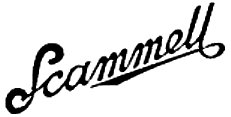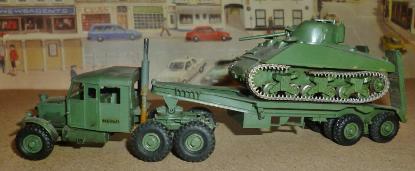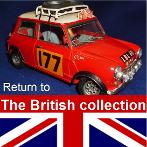
1939 Scammell Pioneer tank transporter
Scammell was arguably Britain's premier large vehicle manufacturer from 1921 to 1988. Its lorries were seen not only on the roads of the British Isles but across the British Empire. One model in particular stands out, the “Pioneer”.
The Pioneer was Scammell's first cross-country vehicle and lived up to it's name across the Empire where made up roads were rare. The Pioneers off road performance was down to a combination of factors. The walking-beam bogie allowed for any of its 4 driving wheels to be raised two feet without the bogie losing traction. The front axle had only three attachment points, one at each end of the axle and the third via an 'A' frame under the cab with suspension by centrally pivoted transverse spring resulting in exceptional travel for the steering wheels when traversing uneven terrain. This road holding and traction was taken advantage of by a slow revving 102 bhp 6cyl' Gardner diesel engine which had loads of torque so the vehicle could haul prodigious weights over very rough ground, although at rather low speeds.
The performance of the 20-ton 6x4 tractor proved attractive to the British Army and although not designed for military use in 1932 the British War Office bought a Scammell petrol engined example and fitted it with a permanently coupled 18ton semi-trailer for tank transporter purposes. It was used extensively for training in tank recovery but it wasn't until 1937 that any more transporter variants were purchased. However, the Army did purchase Pioneer R100 heavy artillery tractors in 1935 and the Pioneer heavy recovery vehicles from 1936. In fact the last Pioneer recovery vehicle was not retired from the British Army service in Belize until the 1980s.
By 1939 offroad Pioneer diesel powered chassis were being used by the British Army for pulling artillery pieces, heavy breakdown recovery vehicles and 20 and 30-ton tractor/trailer combination tank transporters. Many of these vehicles were shipped over to France with the British Expeditionary Force at the start of WWII only to lost during the mass withdrawal to Dunkirk.
Tank Transporter
The production variants of the 20 and 30-ton (Pioneer TRMU30/TRCU30) transporters were equipped with a longer chassis, enabling the addition of an extended cab to accommodate the tank crew as passengers, a power take-off driving a Scammell winch, to haul immobilised vehicles up onto the permanently coupled trailer, and larger rear wheels than the Artillery tractor and Recovery vehicle variants to aid clearance and traction over uneven terrain.
The trailer itself proved to be a problem for the transporters long term use, not only because it couldn't be removed to allow the tractor to haul other trailers, but because the higher profile US tanks meant that the combinations couldn't get under some of the old British bridges. The resulting solution for the Army was the adoption of the American Diamond T tank transporter from 1941, but despite this 459 Scammell Pioneer tractor/trailer combinations were used by the Army.
Post war many of the old trailers were sold off for scrap and the tractors fitted with ballast bodies and converted to pull a variety of other trailers. Others were sold off into civilian hands, usually to have the same conversions applied by their new owners. Today only one complete and original tractor/semi-trailer combination is known to exist.




1/76th scale kit.
Built by Rod.



Airfix kit # A201V, in 1:76th scale (or OO-HO gauge), depicts a Scammell 30 ton version of the tank transporter combination. It was first release (in a bag) in 1962 and has been re-released a further ten times including one in an MPC box, with the last release being in 2005. None of the kit parts have ever been changed only the packaging and instruction sheets have been modified over the years.
The kit has 107 parts (many of then quite tiny!), but is not particularly difficult build considered by Airfix to be series/level 2 when first released. The later releases were hampered by having a degree of mould flash and mould misalignment as the moulds showed their age. There are no clear parts but as the windows are flat it isn't hard to scratch build them from clear acetate.
This model was built straight from the box in the late 1960s. It was brush painted with Humbrol enamels and constructed with tube cement. The MK 1 Sherman tank 'load', built by Rod around the same time, is also a very old Airfix kit, # A3V in the original bagged release and latterly know as kit # 01303.
RETURN TO :-
